Introduction
‘Huns’ – the very word brings up the notion of hordes of horsemen swarming upon the resplendent Roman Empire, with their unkempt appearances, cacophonous intensity, and ferocious ambitions. Well, the historical truth is very different from this biased depiction heaped upon by the Christian chroniclers of the time. In fact, in spite of their branding as being “scourges of God’s fury” (Flagellum Dei), it still remains a mystery when comes to the origins of the Huns.
For example, early 19th-century historians equated these nomads with the equestrian Xiongnu tribes who were driven by the Chinese from their borders in the 4th century AD. However, modern historians tend to place the geographical origins of the Huns in a more westward territory that roughly corresponds to modern-day Kazakhstan. In any case, one thing remains certain – the Huns were far more advanced and adept than their naive ‘barbarian’ label suggests.
Contents
- Introduction
- Who Were the Huns?
- The Huns Were Not Entirely Nomadic
- The Early Incursions into Roman Territory
- The Rise of Attila – The Nemesis of the Roman Empire
- Attila the General
- The Huns After Attila
- The Misconception of Hunnish ‘Hordes’
- Equipment and Armor of the Huns
- The Potent Composite Bow of the Huns
- The Advantage of Horse Stirrups?
- Horsemanship and Psychological Dominance
- The ‘Hardy’ Resource of Horses
- The Culture of Cranial Deformation
- Honorable Mention – Huns as Roman Mercenaries and Elite Bodyguards
Who Were the Huns?
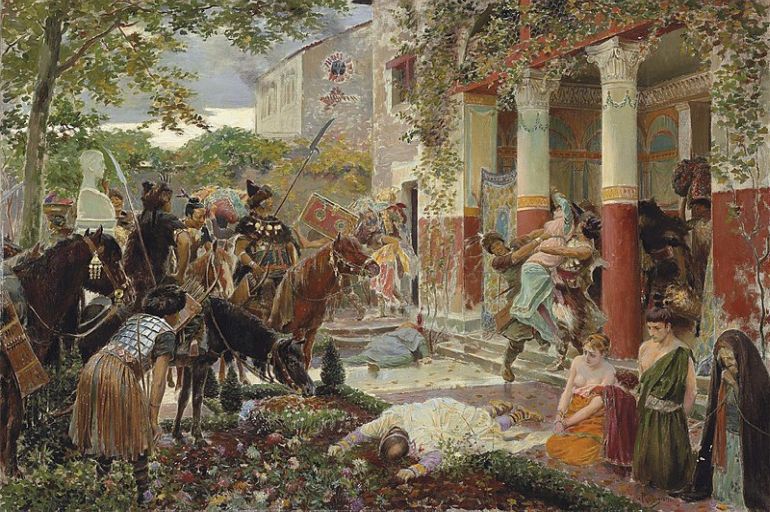
As we fleetingly mentioned before, in 18th-century academia, there were efforts from many scholars (including French orientalist Joseph de Guignes) to equate the Huns with the Xiongnu tribes of pastoral nomads, who were perceived in the historical record of ancient China as being akin to ‘horse barbarians’ (the derogative suffix nu denoting slaves).
But as is the case with the Hun-contemporary Goths, such early academic views were evaluated to fit in with the narrative of ‘barbarian’ Huns, as opposed to more independent assessments. Suffice it to say, many modern historians tend to dismiss the Xiongnu theory of Hun origin based on the clear lack of evidence.
However, the dismissal of earlier theories doesn’t bring us any closer to the identity of the Huns. To that end, historian Nic Fields has hypothesized the scope of ‘why’ instead of ‘who’ – as to why did the Huns progressively move towards the westward sections of their lands within a relatively short span of time?
The answer, according to Fields, might relate to how the Huns were afflicted by severe weather conditions, including calamitous droughts, that rather forced them to migrate to (and invade) western lands, by circa late 4th century AD. And while such devastating weather patterns might have even severely depleted singular tribes, the Huns, by virtue of their sheer numbers and capacity, managed to ‘weather the storm’ by moving westwards.
This, in turn, hints at their identity as a super-tribe or a confederacy (rather than a single tribe) with vast resources and manpower – who could manage to escape the climatic conditions of their native lands (probably present-day Kazakhstan) and further effectively invade neighboring domains.
Some scholars have conjectured that many tribes of this Hunnish confederacy were of possibly Turkic or mixed-Turkic origins. And as the super-tribe moved westward, it must have incorporated elements of other ethnicities, including the Germanic Goths and Iranic Alans, thus leading to an even more dynamic and complicated tribal structure.
It should be noted that historians like Peter Heather have hypothesized that instead of weather patterns, it might have been other eastward tribes (or nomadic groups) of Central Asia that pressured the Hunnish confederacy to move on to new lands. Academic inferences also include how population explosion and the coveted ‘richness’ of the Roman lands might have induced the Huns to expand to the western territories.
Incredibly enough, the 6th-century Roman bureaucrat and historian Jordanes provides a fairly straightforward and rather xenophobic origin story of the Huns –
We learn from old traditions that their origin was as follows: Filimer, king of the Goths, son of Gadaric the Great, who was the fifth in succession to hold the rule of the Getae, after their departure from the island of Scandza…found among his people certain witches. Suspecting these women, he expelled them from the midst of his race and compelled them to wander in solitary exile afar from his army.
There the unclean spirits, who beheld them as they wandered through the wilderness, bestowed their embraces upon them and begat this savage race, which dwelt at first in the swamps, a stunted, foul and puny tribe, scarcely human and having no language save one which bore but slight resemblance to human speech.
The Huns Were Not Entirely Nomadic
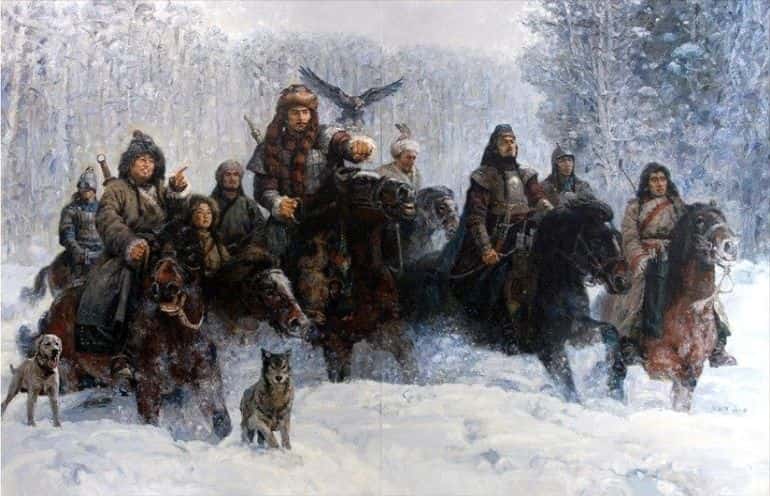
n the previous entry, we made it clear how the Huns didn’t pertain to some kind of a singular tribe of Central Asia whose occupation was solely based on pastoral activities. On the contrary, the Huns (and their dynamic sub-tribes) had been neighbors to agrarian societies for centuries. Consequently, they had possibly adopted many of the cultural customs of sedentary people, including the Germanic populace of Europe and the (semi-nomadic) Iranian Alans of Eurasia.
In essence, they developed a system of wealth distribution (that also entailed tributes), which in turn allowed many of the Hun kings and elites to purchase valuable objects and ‘pleasures’ – thus mirroring their civilized counterparts.
Archaeological evidence rather points to such a scenario, with isotopic analysis of Hunnish bones and objects buried in Pannonia suggesting how they conducted some form of cultural exchange even with the Romans. There is also evidence of well-supplied Hunnish villages on the great Hungarian plain during the period of the Hunnic Empire, circa 5th century AD. Such settlements tended to have rudimentary defenses of wattle-and-daub walls and were strategically connected to proximate agricultural lands.
Interestingly enough, a few ancient sources also attest to such cross-cultural influences. For example, according to Roman writer Priscus of Panium, who was one of the very few eyewitnesses during the Hunnish-Roman conflicts – Attila himself resided in a sort of established ‘large village’, which had wooden enclosures, walls, towers, and even a Roman-style bathhouse for the nobles.
The Early Incursions into Roman Territory
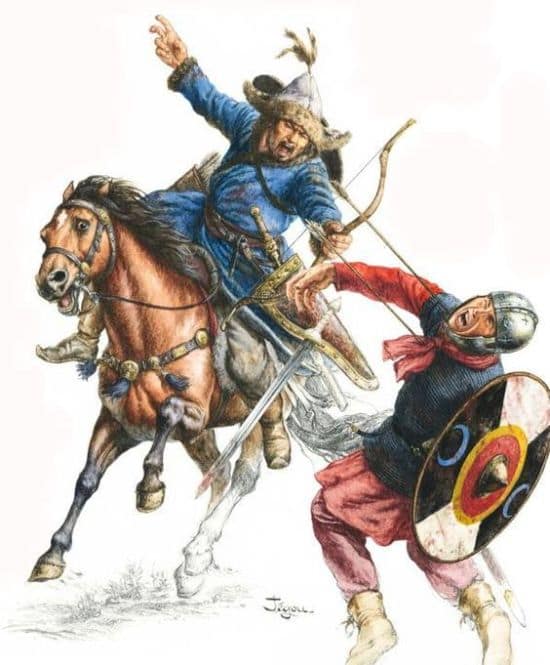
However, before the birth of Attila, the formidable onslaught of the Huns had already claimed the Alans, a probably Iranic (with Germanic elements) tribe as the first victim, by circa 370 AD. Their next target was the Germanic tribes of Greuthungi Goths (who mainly resided by the Eurasian borders), with ancient sources mentioning how the pressure was so high on the Gothic king Ermanaric that he had to resort to suicide.
Finally, the Huns approached the borders of the Roman Empire via the Black Sea coast and started to coerce the frontier Thervengi Goths (who mostly lived within Roman territories). This directly led to widespread chaos in the Western Roman Empire, with roving bands of Vandals, Goths, and other groups being pushed into the Roman provinces of Central and Eastern Europe. In fact, the desperate (and rebellious) Goths delivered a crushing defeat on the Roman army of the Western Empire at the Battle of Adrianople in 378 AD.
The Hunnish incursions also afflicted the Eastern Roman Empire, so much so that by 398 AD, the Hunnish tribes were known to have devastated Thrace and even reached Syria. But instead of occupying and conquering territories, they were content with plundering – which in itself suggests that the Huns still didn’t have a fully centralized structure. Simply put, their disparate tribes, by virtue of their autonomous nature (within a larger super-tribe) made forays based on localized conditions – both political and economic.
The Rise of Attila – The Nemesis of the Roman Empire
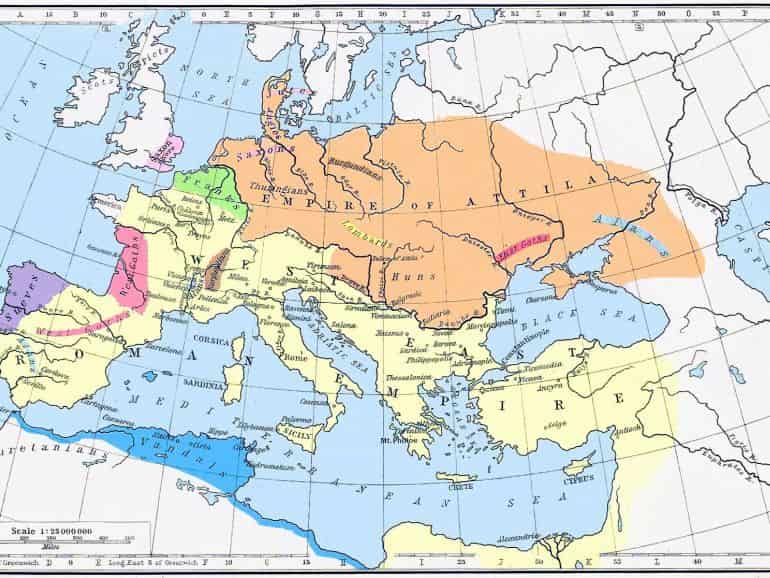
But to understand the scope and reach of the Huns at their peak, one has to comprehend the political power wielded by Attila in the 5th century AD. In that regard, one potential misconception relates to how Attila schemed to have his elder brother Bleda murdered – but there is no evidence to suggest such an episode of fratricide.
In any case, what we know is that both Attila and Bleda were part of a dynasty that had already united many of the tribes and sub-groups of the Hunnish confederacy (possibly gelled by the successes of the aforementioned 4th-century incursions into Europe).
Interestingly enough, over the course of the next few decades (i.e., during Attila’s rule – circa the 5th century), the confederacy rather boasted a Hun Empire that, according to Priscus, ruled ‘all Scythia’, thereby encompassing the lands west of the Caspian Sea that stretched all the way to the Baltic. This also reflected on the subject people of the Hunnish Empire, which (according to some scholars) comprised a Germanic majority ruled over by a semi-nomadic Turkic or mixed-Turkic elite.
By this time, the Romans had already started paying the Huns their yearly tributes, and the sums were rather doubled (to 700 pounds of gold annually) by the Treaty of Margus, in 435 AD. And while it is somewhat vague as to how Attila the Hun came to be the sole ruler of this dynasty (since he started out as a junior ‘co-ruler’ alongside Bleda), what we know is that he was a shrewd strategist. In essence, while Attila was known for his war-mongering attitude toward his rivals, his dare-devilry and warrior ways gave way to able generalship after his ascension to the throne.
Attila the General
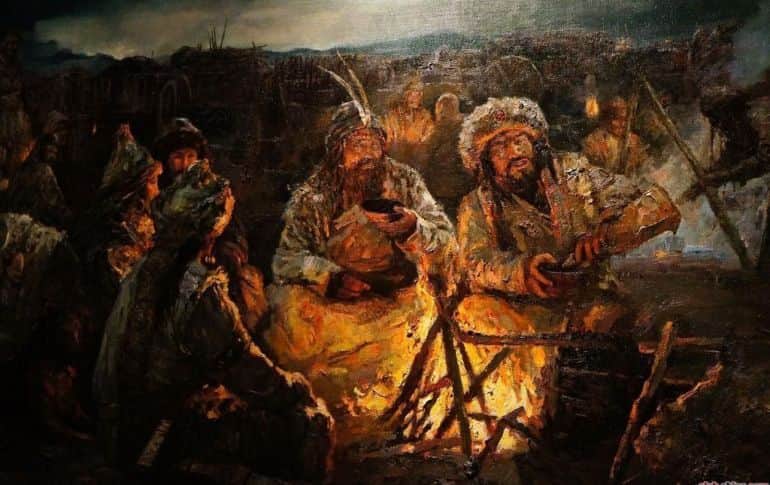
One such example of Attila’s cunning and strategic acumen comes from the years of 441 – 443 AD when the Huns invaded the Balkans by taking advantage of an ongoing conflict between the Eastern Roman Empire and the Sassanian Persians. In the following year of 447 AD, his Hunnic army threatened to attack Constantinople, this time taking advantage of a massive earthquake that devastated Anatolia.
After his plundering adventures in Greece, Attila and his Hun army (that comprised elements of semi-nomadic ‘Huns’, Goths, Gepids, Alans, and even smaller groups of Franks and Alemanni) turned their attention towards Gaul. And while the Gaulish regions were devastated, the invasion culminated at the Battle of Chalons (also known as the Battle of Cataluanian Plains) in 451 AD – where the Roman general Flavius Aetius (aided by Goths and other barbarian tribes) possibly scored a pyrrhic victory (or at least a stalemate) over the Hunnish forces.
In spite of this setback, Attila returned in the following year and invaded Italy, which led to the sacking of many cities and towns. Interestingly enough, refugees from such destructive incursions are said to have founded Venice amongst the safety of marshes by the coast of northeast Italy.
In an ambiguous turn of events, the Huns stopped short of sacking Rome itself, possibly affected by an ongoing famine, a possible outbreak of malaria, and daunted by the fortifications of the city (and also laden with tributes). Traditional Roman accounts of the Western Empire talk about how Attila was convinced by Pope Leo I (and the apparitions of St. Paul and St Peter) to turn back from Rome.
Consequently, Attila and his Hunnic armies returned to their stronghold in Hungary (their fortified capital was known as Tigas). And while Attila may have planned to once again launch a campaign directed at the eastern lands, he was mysteriously found dead on the wedding night after his marriage to a Germanic princess.
The Huns After Attila
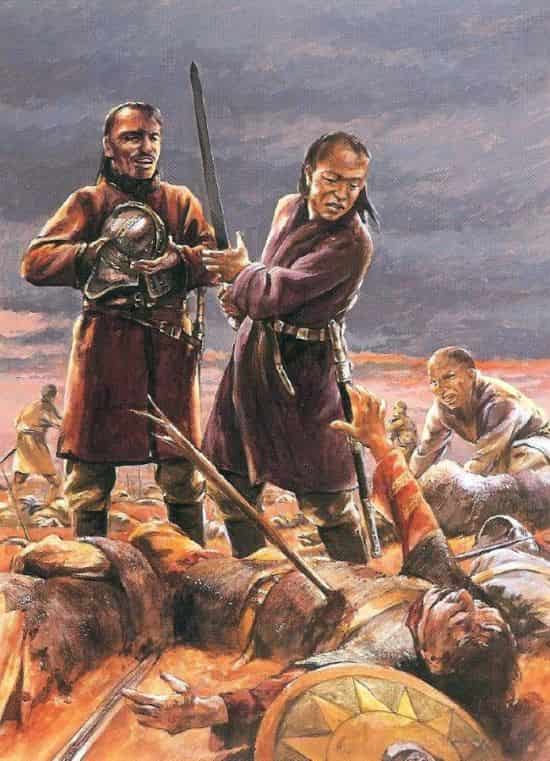
Attila’s death had huge ramifications for the burgeoning Hunnic Empire. As we mentioned before, the Huns never really had a system of centralized government, but Attila’s effective rule (complemented by his dynamic personality) filled that administrative and political void. Furthermore, the Huns themselves (as Turkic elites) were a minority in their empire, outnumbered by folks from the eastern reaches of the Baltic and the Balkans.
Consequently, after Attila’s untimely demise, many of these East Germanic subjects and their allies led various rebellions to fill the power vacuum. At the same time, the Hunnish confederacy (or Hunnic Empire) fractured into singular tribes due to a lack of senior leadership. Unsurprisingly, many of Attila’s sons fought over the remnants of this short-lived empire.
Historical events rather mirror such a chaotic state – with the Gepids (an East Germanic people) dealing a crushing defeat on Attila’s eldest son Ellak in Pannonia circa 454 AD, which led to the latter’s death. However, as opposed to popular opinion, the death of Attila (and many of his successors) didn’t completely signal the end of the Huns. Some of the major tribes, although fractured from the larger confederacy, migrated back to the steppes, especially in and around what is now Ukraine, to continue their nomadic and semi-nomadic lifestyles.
According to historian Nic Fields, among these tribes, the Onogur, Utigur, and Kurtigur Huns were probably the most powerful. In fact, the nomadic warriors of Kurtigur Huns continued to be a threat to the Eastern Roman Empire even in the 6th century during Justinian’s reign – so much so that they audaciously led a huge expedition to the weakly defended Thracian province. Their ultimate aim was to sack Constantinople, circa 558 AD.
But it was the ever-effective generalship of Belisarius, who needed every bit of his guile, that stopped the Kurtigurs. Some sources mention how the Eastern Romans convinced the approaching Huns of the defenders’ numerical superiority through various ruses – and it forced the Kurtigurs to withdraw from Thrace.
Over the course of the next few decades, the Kuritgurs were embroiled in a war with their rivals the Utigurs, oftentimes instigated by the political machinations of the Eastern Romans. And ultimately, many Huns were absorbed into the emergent ‘supertribe’ of the Avars. The Avars, in turn, went to establish their Khaganate in what is now Austria (eastern parts), Hungary, Romania, Serbia, and Bulgaria.
The Misconception of Hunnish ‘Hordes’
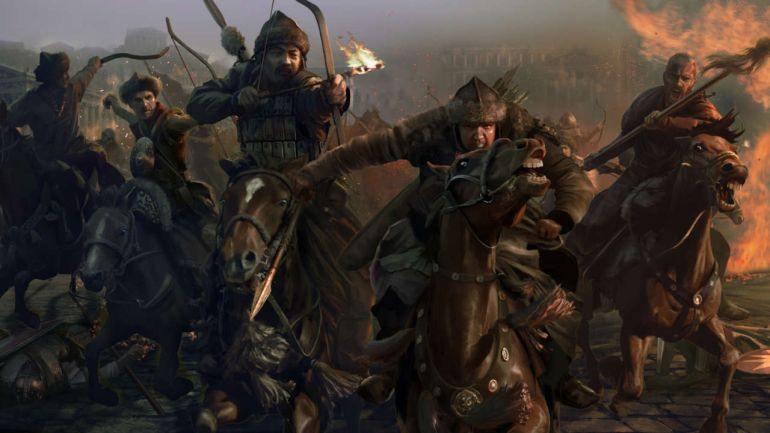
Jordanes claimed how Attila descended upon Eastern Europe with a ‘half-a-million’ men. But once again, if we consider the aspects of historical evidence and logistics, the ‘hordes of Huns’ narratives presented by some ancient chroniclers were at best propaganda and at worst biased lies.
To that end, as was often the case in many historical scenarios, ancient authors had to accentuate the numbers of the invaders to justify the Roman defeats (or to glorify their rare victories). In fact, according to most anthropological accounts, the invading Huns only formed a thin minority of the societies they conquered. In other words, these so-called countless hordes very rarely amounted to tens of thousands of Hunnish horsemen.
As for the logistical perspective, the Huns were not exactly an agricultural society (though their expansions were augmented by agricultural settlements). Their primary economic activities often involved herding, hunting, and seasonal food-gathering – all of which require very large regions of grazing lands and hunting grounds.
Unfortunately for the Huns, the European landmass was simply not big enough for such an expansive steppe-inspired economic scope. Such conditions meant that the Huns had to travel and raid in relatively smaller groups, thus throwing a wrench into the whole ‘horde’ narrative. In that regard, historian Nic Fields has surmised how a typical raiding party would have numbered around 1,000 horsemen.
Equipment and Armor of the Huns
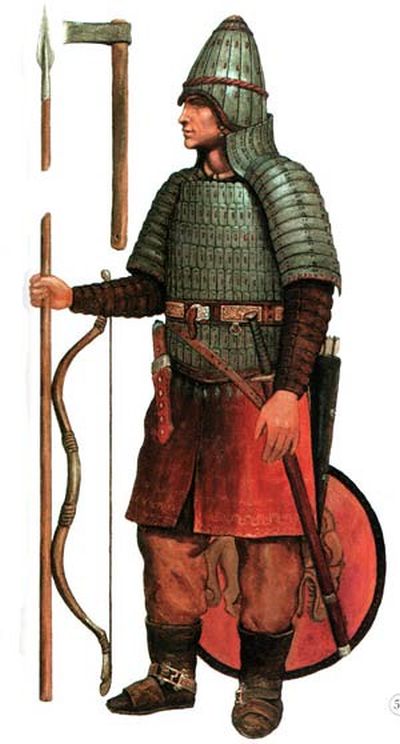
A clear distinction has to be made between the equipment and armor used by the Hunnish elite and the other sections of their army (comprising people from different ethnicities and tribal affiliations). Pertaining to the former, historian Nic Fields has surmised how the high-ranking ‘Huns’ probably favored the steppe-inspired lamellar armor – composed of an arrangement of narrow vertical plates (lamellae) of metal.
And while such armor could be slightly inflexible, like the scale armor of the Scythians, modifications (like extending pteruges) over ‘ergonomic’ cuts were made along the armpit and groin regions. In stark contrast, the ‘regular’ Hun was content with the unadorned short-sleeved steppe tunic made of wool or goat hair.
As for protective gear, the horsemen, especially the heavy horse archers were furnished with small circular shields made of wood or hide that could be attached to the forearm. These were complemented by helmets like the typical spangenhelm (made of multiple pieces that gave way to a conical form), many of which were acquired as booty from raiding and plundering enemy camps.
Coming to weapons, like many contemporary armies, the spear and sword were preferred by the cavalrymen. But the iconic weapon associated with the Huns arguably relates to the powerful composite bow (discussed in the next entry).
The Potent Composite Bow of the Huns
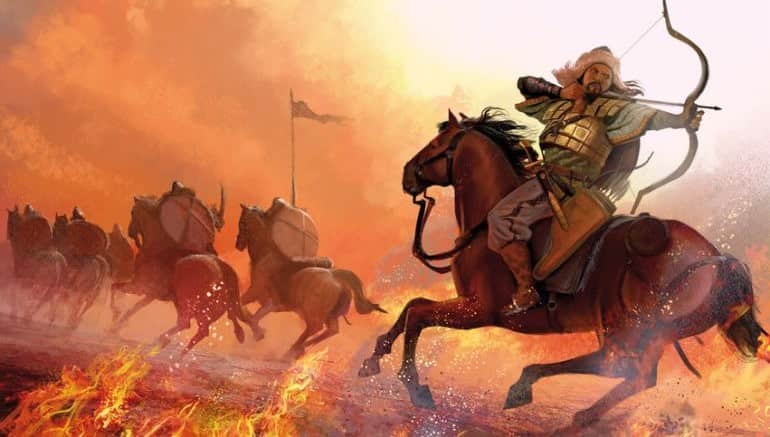
By its very nature, the design of a composite bow pertains to an elaborate arrangement of materials that can resist the forces of both stretching and compression. The steppe dwellers improved upon this design scope by incorporating ‘specialized’ animal materials that had apt mechanical properties. For example, sinew is known to have an almost four times greater tensile strength than the wooden bow, while the complementary horn has incredible compressive strength.
Furthermore, the Huns added notched extensions made of bone or horn (generally sourced from steppe longhorn cattle) to the limbs of the bows – thus endowing them with far greater rigidity than conventional wood can offer. These engineered extensions even had their tactical value, as they allowed the archer to bend and draw a heavier bow with lesser physical effort.
And, since we brought up the action of drawing the bow, the Huns were also known for using different arrows for hunting and battles. In the case of battles, they preferred to carry arrows with blades that were both stocky and broad, while their shoulders were kept hooked. This made the delicate process of extracting the arrow from a body very difficult, which often resulted in extensive blood loss.
The Advantage of Horse Stirrups?
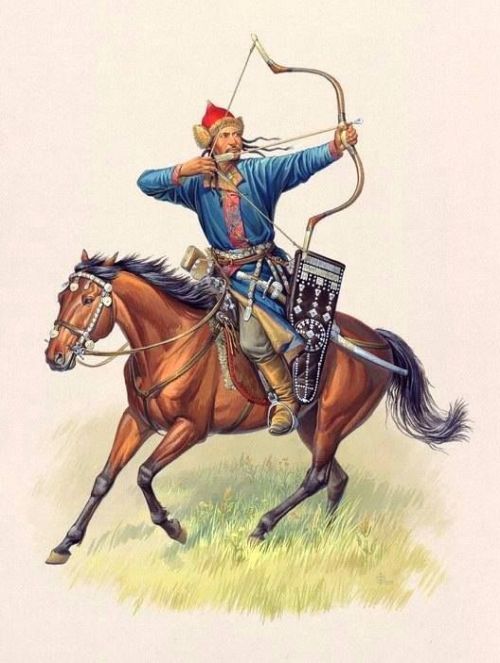
Much has been said about the excellent horsemanship usually demonstrated by the Huns (in both battles and hunts), and perhaps some of it can be ascribed to their use of stirrups. There is certainly a tactical side to this horse equipment, especially when the horse archers used both their hands to release the arrow from the sturdy composite bow.
During such an action, the entire momentum of the body had to be supported by the legs, and they, in turn, were probably ‘anchored’ to the stirrups. Moreover, the support of legs also allowed the horseman to keep a correct posture during riding, and that helped in keeping up warm blood circulation in very cold conditions.
But in spite of such advantages of the stirrup, its role has been possibly overstated in the case of Huns. We say ‘overstated’ because no particular type of stirrup can be specially attributed to the Huns – on the basis of the archaeological record. However, their successors – the Avars, were known to use stirrups by the 7th century AD (as is evident from their grave artifacts) and possibly introduced this support equipment to Europe.
So, in that regard, while stirrups might have played their role in battlefield tactics, the Huns also took advantage of their intrinsic skill in horsemanship (learned at a young age), thus making them superior in mobility to European forces.
Horsemanship and Psychological Dominance
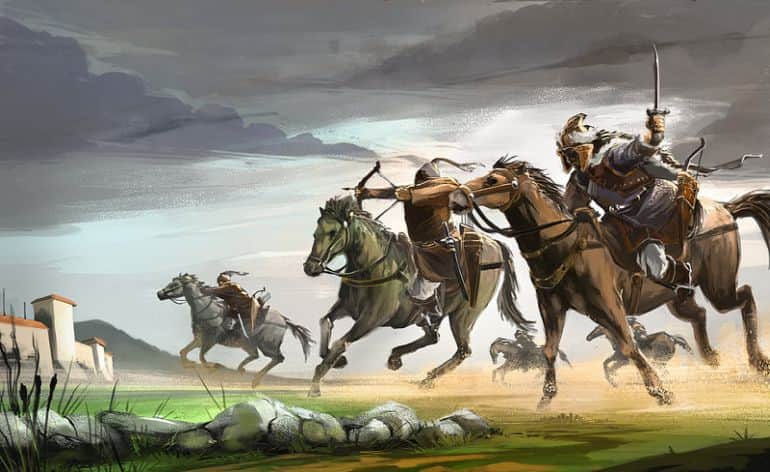
Agility was the cornerstone of the battlefield tactics of nomadic people. The Huns improved upon this scope of flexibility by using their loose formations to surround the enemy. However, they tended to avoid melee combat as much as possible in the beginning stages of the conflict.
Instead, their horse archer contingents relied on precise missile barrages that afflicted the foe both physically and psychologically. And to ‘complement’ such an intense scenario, the Huns intentionally made harsh and guttural sounds that caught the enemy unawares, thus endowing an illusion of Hunnish ferocity and ‘barbarism’.
But where the Huns truly excelled was their execution of the seemingly disparate tactics that more than often confused the enemy forces. As Ammianus Marcellinus, a Roman soldier and author from the 4th century gave an account of how the Hunnish horsemen were known to “purposely divide suddenly” into scattered bands from an organized formation.
Then they rushed forth into various directions of the Romans almost in a disorderly manner, which rather baffled the foe. But this was a trick that simply epitomized the order-in-chaos dictum. Consequently, the Huns aptly overcame the Romans by their aptitude in archery and suddenness in charge, thus “dealing terrific slaughter” – in the words of Ammianus.
The ‘Hardy’ Resource of Horses
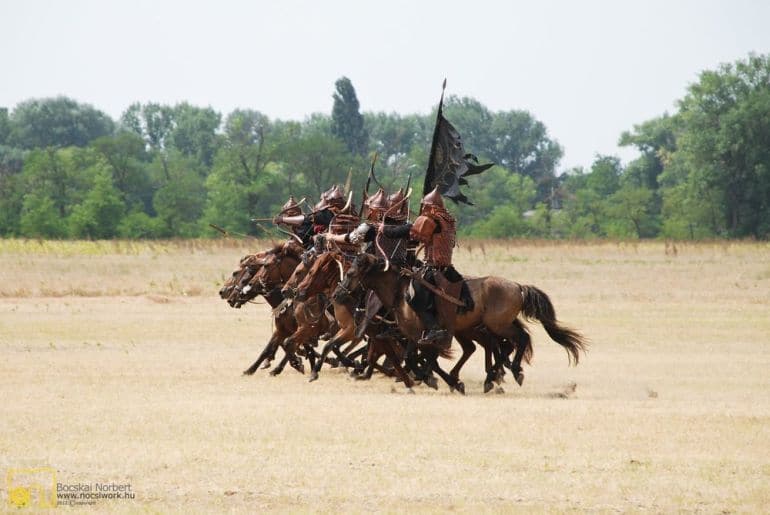
When we talk about the ancient history of the nomadic people, we must understand that most of these factions had the intrinsic advantage of having large numbers of horses at their disposal. Combined with their innate equestrian skills (practiced from childhood), this is what provided the nomadic Mongols and their predecessors the semi-nomadic Huns the aspect of dreaded mobility – that played a crucial part in both strategic and tactical scenarios.
And unsurprisingly enough, much like the Mongol variant, the Huns were also mostly reliant on the steppe variety of horses – known for their rough coats, short legs, muscular structures, and incredible stamina. When comparing with Roman horses, Vegetius mentioned (p 49, The Hun – Scourge of God, AD 375 – 565, by Nic Fields)
Their body is angular with no fat at all on the rump. Nor are there any protuberances on the muscles. The stature is rather long than tall. The trunk is vaulted, and the bones are strong, and the leanness of the horses is striking. But one forgets the ugly appearance of these horses and this is set off by their fine qualities: their sober nature, cleverness, and their ability to endure any injuries very well.
In essence, looks aside, the steppe horses more than made up for it by their sheer effectiveness in logistical and military scenarios. We should also remember that the steppe horses were accustomed to the rigors of a relatively harsh environment and weather conditions, which made them sturdier than the ‘noble’ varieties of the Romans.
And lastly, the Huns, like the later Mongols, were known to have carried reserve mounts – which was in stark contrast to the highly-prized but lower-in-number stall-fed warhorses of their ‘sedentary’ enemies. And while the Hunnish Empire of the 5th century had largely evolved beyond its pastoral origins, the Hunnish elite probably still maintained their equestrian superiority and advantage in horse numbers. Such evidence can be gathered from their settlements on the Hungarian plains, which provided (just about) adequate grazing grounds for their mounts.
On another note, the horses sometimes served as ‘moving rations’, by providing the Hunnish warrior with milk, meat, and even ‘nourishing’ blood, especially when they tended to raid over large distances. During shorter raids, the Huns depended on their expertise in hunting, thus mostly consuming game meat – which was often boiled and then dried without salt. Simply put, a small group of Hunnish warriors acted as a self-sufficient unit that tactically functioned without requiring any unwieldy supply line.
The Culture of Cranial Deformation
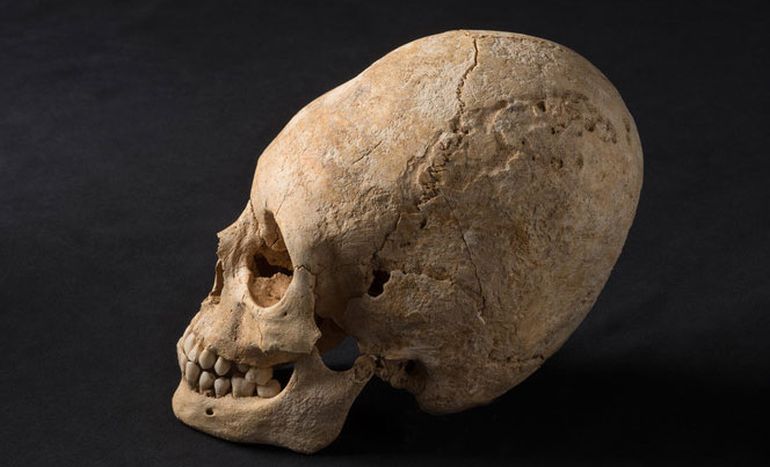
While the Huns preferred to cut back their hair to the temple region, it was left to grow (usually dirty and unattended) along the back of their heads. However, such ‘hairy’ features were only limited to the head portion, since most Hun warriors shaved their cheeks.
This served a ritual purpose, with the soldiers intentionally scarring their cheeks to conform to their societal warrior codes. In some cases, the wounds were made deep (according to Jordanes) to supposedly mourn the loss of their fallen brethren in battles – with the scars symbolizing the tears of blood.
The interesting feature of the Hunnish warrior was their practice of cranial deformation – which was usually achieved by binding the head from childhood (when the skull tends to be soft yet growing). Similar practices were also observed in other ethnically different nomadic groups, like the Sarmatians.
However, historians are still puzzled by the Hunnish practice, since almost no contemporary record of such rituals is found in literary sources (which contradict the existing archaeological finds). This led to the hypothesis that perhaps the practice was only prevalent in the elite groups of the Hunnish society.
Honorable Mention – Huns as Roman Mercenaries and Elite Bodyguards
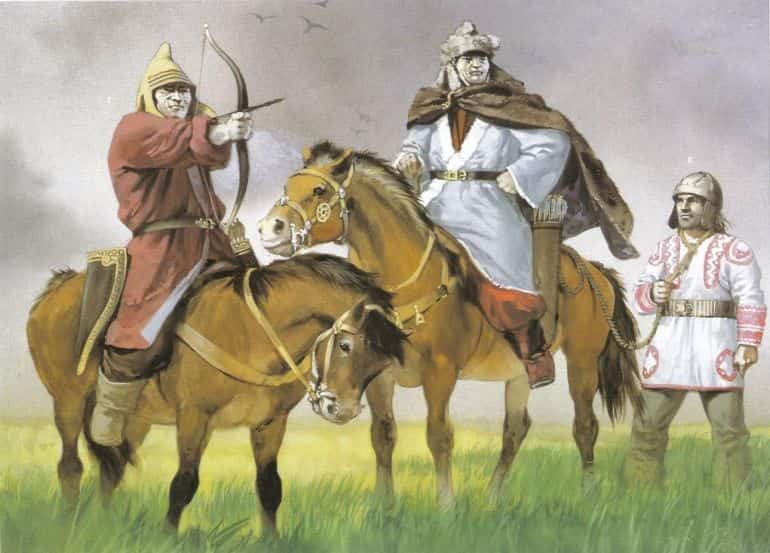
Mirroring the chaotic military and a rather complex political scenario in the 4th-6th-century Roman world and Eurasia, we know that tribal structures were gradually eroded and replaced by the mutual appreciation of security borne by confederations.
To that end, we know of Goths fighting with Romans and yet also serving in Roman frontier armies. Similarly, few Huns (or associated horsemen) possibly took part in the ‘first’ Gothic incursion into Greece. Over time, the Romans also started to employ Hun mercenaries in their service, in spite of their general aversion (and fear) for the ‘horse barbarians’.
There are accounts of the Huns being even inducted into the bodyguard units of Romans – as was the case with the bucellarii retinue of Flavius Stilicho, a magister of Vandal descent in the early 5th century. Even Western Roman Emperor Honorius possibly had 300 Hunnish warriors as part of his scholae palatinae (an elite military guard unit) stationed at Ravenna, in Italy. The very same Honorius possibly also employed thousands of Huns as mercenaries for his war against Alaric, the first king of the Visigoths.
An auditory accompaniment evoking the Hunnish invasions – performed by Mongolian throat-singer Bukhu Ganburged and composer Richard Beddow, for the video game Total War: Attila.
*Note – The article was updated on 19th September 2019.
Book Reference: The Hun ‘Scourge of God’ AD 375-565 (by Nic Fields)
Other Online Sources: Britannica / AllEmpires
Featured Image Credit: drvce
And in case we have not attributed or misattributed any image, artwork, or photograph, we apologize in advance. Please let us know via the ‘Contact Us’ link, provided both above the top bar and at the bottom bar of the page.
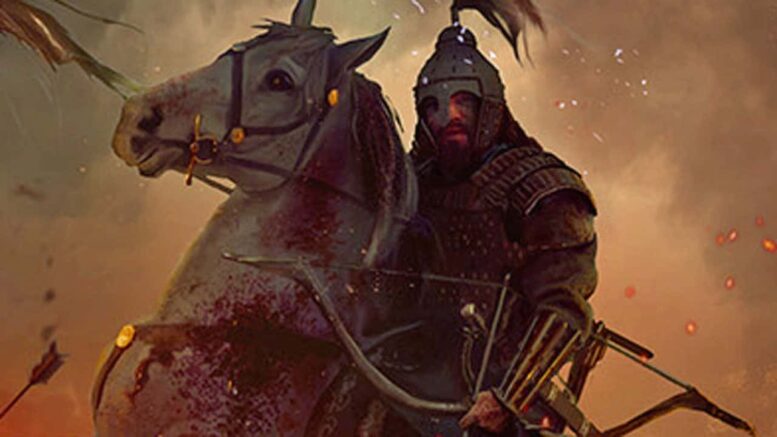
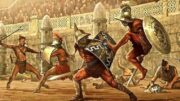
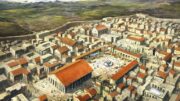
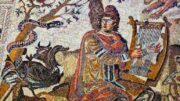
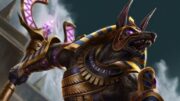
Be the first to comment on "Huns: The Remarkable Super-Tribe of Horsemen from the Steppes"